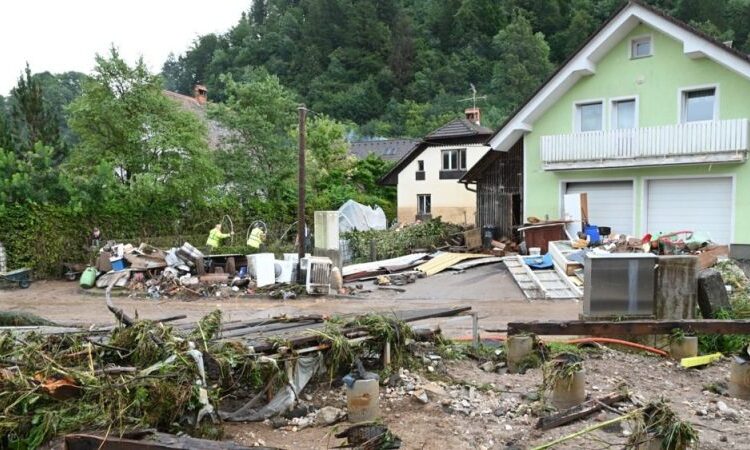
Floods that hit large parts of northern and central Slovenia in early August are estimated to have caused around €5 billion in damage to homes, infrastructure and businesses, equivalent to one-third of the national budget or around 8% of GDP, according to the latest government estimates.
This was revealed as the government on Thursday unveiled the second emergency law aimed at facilitating the rebuilding process after the first emergency law dealt with the immediate clean-up.
“The destructive power of torrential streams and landslides caused damage that preliminary estimates put at €5 billion, and we are starting the reconstruction from scratch – in a different, interdisciplinary way,” said Public Administration Minister Sanja Ajanović Hovnik.
A special facility will spearhead the reconstruction, called the Slovenia Reconstruction Fund, which will be set up in the next two months and will pool together various types of finance, from budget allocations to EU funds and special contributions levied on business and households.
The fund will be modelled on similar funds set up by other countries, said Finance Minister Klemen Boštjančič. The main reason the government has opted for such a solution is compliance with EU rules on borrowing, specifically, the impact of such funds on the budget deficit.
The minister could not yet reveal the details, but unofficial information reported by several media indicates the fund would manage around €3 billion. One way the fund will be financed will be a special contribution from all employees, farmers, the self-employed and businesses, the amount of which has not yet been revealed.
The EU will contribute €400 million from the Solidarity Fund and Slovenia plans to leverage some of the €2.7 billion in Next Generation EU loans it had not planned to draw. Existing cohesion funds totalling €3.3 billion can be reprogrammed to help the relief effort.
(Sebastijan R. Maček | sta.si)







